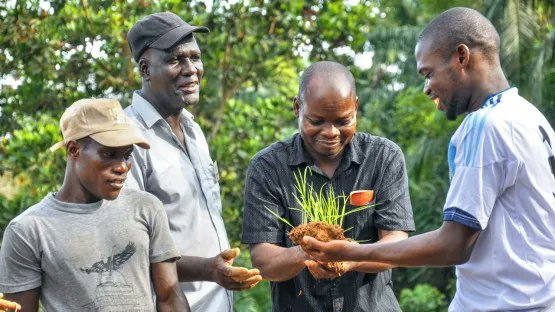|
Getting your Trinity Audio player ready...
|
IN 1947, India’s population was about 330 million and the foodgrain production was around 50 million tonnes (MT). This amount was insufficient to feed the population. India could not purchase foodgrains from other countries because of lack of foreign exchange. The US Public Law 480 allowed India to purchase American foodgrains with rupees. India imported 10 MT of wheat in the early 1960s under the PL 480 programme, as a near-famine situation existed in the country.
Indian leaders were aware, however, that dependence on other countries for food could compromise the nation’s freedom. Jawaharlal Nehru gave the highest priority to agriculture by declaring in 1947, “Everything else can wait but not agriculture.”
The Indian government established seven agricultural universities in the country in the early 1960s on the pattern of the US land grant universities. Each university had American advisers on the campus. For example, Punjab Agricultural University (PAU) had advisers from The Ohio State University and the Agricultural University in Pant Nagar was assisted by the University of Illinois.
Prof MS Swaminathan, then at Indian Agricultural Research Institute (IARI), invited Dr Norman E. Borlaug, who had developed high-yielding, dwarf wheat varieties at the Rockefeller Foundation (now the International Maize and Wheat Improvement Centre or CIMMYT) in Mexico, to India in 1963. Seeds of a few good varieties of wheat were imported in 1966 from Mexico and distributed among agricultural institutes. The new seeds required larger inputs — irrigation, fertilisers and pesticides — than the local varieties. PAU took the lead in developing new dwarf varieties of wheat, with acceptable grain colour and quality. Dr DS Athwal, a prominent PAU plant breeder, developed India’s first high-yielding dwarf wheat ‘Kalyan’.
Thanks to the improved seeds and technologies developed by PAU, IARI, and other agricultural universities/institutes, India’s annual foodgrain production increased from 51 MT in 1960-61 to 213 MT in 2007-08, defying the doomsday predictions by American ecologist Paul R. Ehrlich, whose triage system categorised India as a hopeless case in his book The Population Bomb. This was the beginning of unprecedented gains in wheat productivity in India. Rice production showed similar gains. India became self-sufficient in cereal grains by 1974. The Government of India passed the historic Right to Food Act in 2013 to ensure food for all citizens.
The monoculture of the wheat-rice cropping system took deep roots in the ‘food bowl states’ of Punjab, Haryana, and western UP, as the government started purchasing only these two food-security crops at the minimum support price (MSP). Perpetuation of this unsustainable cropping system resulted in the loss of crop diversification, soil-health problems and a serious decline in the water table. Even though the rice was not a food staple in the food bowl states, the area under rice in Punjab alone increased from a mere 230,000 hectares (ha) in 1960-61 to 2.83 million ha by 2012.
India has made remarkable progress in food production. In 2021, India produced 314 MT of foodgrains, 102 MT of fruits and 200 MT of vegetables. India was expected to produce 110 MT of wheat in 2022, but because of the un-seasonally high temperature in March, wheat production was 11 MT less, causing a rise in prices. Climate change makes future production uncertain.
Many experts have indicated that the food bowl states might run out of underground water within 20 years if the exploitative rice-wheat monoculture continues.
As per FAO data, India’s productivity (kg per ha) of certain important crops lags at the global level. India is behind in cereals (3,280 vs 4,070), cotton (1,380 vs 2,610), soybean (930 vs 2,780), and sunflower (660 vs 1,800). The crops where India is ahead of the global productivity are sugar crops (77,350 vs 68,460), castor (2,170 vs 1,680), and coconut (6,825 vs 5,315). For example, the gap between India’s cereal productivity and the global one is 19%. Some of it can be increased through the use of cutting-edge, modern genetic technologies. New investments in agricultural research and development will be needed.
In India, 21 MT of wheat grain is lost annually to rodents, birds, fungi and moisture due to lack of scientific grain storage infrastructure. In addition, based on the UNEP’s 2021 report on annual household food waste, India wastes 69 MT of food (50 kg per capita). This is happening even as 200 million people in India go to bed hungry every day.
Challenges are always opportunities to innovate — modernise the scientific research infrastructure in agricultural universities and reduce academic inbreeding.
India’s population is estimated to be 1.7 billion in 2050. The National Academy of Agricultural Sciences estimated that to feed this population, India would need to produce 50% more foodgrains than produced now, 230% more fruits and 90% more vegetables.
To end hidden hunger (malnutrition, under-nutrition), emphasis should be on coarse grains such as millets and biofortification of cereals with iron, zinc and vitamin A.
The government should make serious efforts to make the ever-elusive crop diversification a reality through enhanced investments in the agricultural sector and assured marketing for alternative crops. Research on crops other than rice and wheat should be accelerated.
The biggest existential challenges our agriculture faces are climate change and water shortage. We need to be able to predict the climate with improved accuracy to tailor new crop varieties to the conditions. For example, crop breeders would need to have accurate data on future temperatures, expected frequency of droughts and rainfall patterns.
In the ‘food bowl states’, paddy cultivation needs to be reduced to save water. In addition, rainwater harvesting centres should be established in villages.
The dream of becoming a $5-trillion economy by 2024 can’t be fulfilled without proper investments in agriculture. Agriculture cannot be on the waiting list.
Source: Tribune






